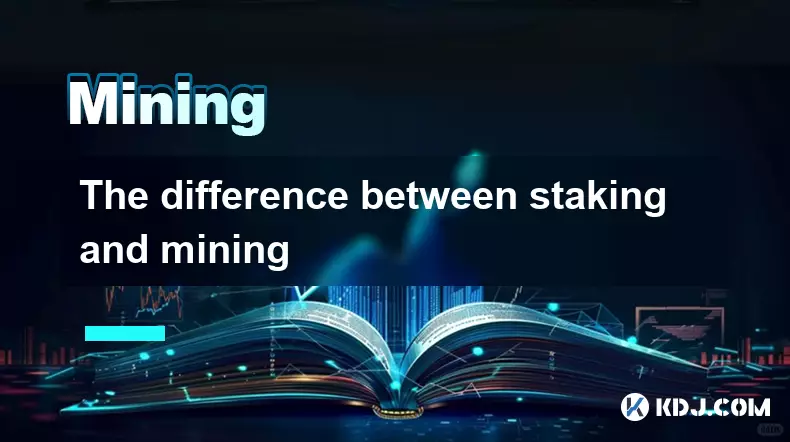-
 bitcoin
bitcoin $110047.851143 USD
-1.37% -
 ethereum
ethereum $3727.617466 USD
-1.30% -
 tether
tether $1.000961 USD
-0.05% -
 bnb
bnb $1114.045467 USD
1.72% -
 xrp
xrp $2.343280 USD
0.14% -
 solana
solana $174.674876 USD
-5.85% -
 usd-coin
usd-coin $0.999999 USD
0.02% -
 tron
tron $0.311757 USD
-2.44% -
 dogecoin
dogecoin $0.183678 USD
-3.76% -
 cardano
cardano $0.627109 USD
-2.07% -
 ethena-usde
ethena-usde $1.000300 USD
0.15% -
 hyperliquid
hyperliquid $36.865760 USD
-2.74% -
 chainlink
chainlink $16.968918 USD
-1.48% -
 stellar
stellar $0.318159 USD
0.47% -
 bitcoin-cash
bitcoin-cash $500.637224 USD
-1.56%
What is a hosted mining service?
Hosted mining services let users lease real hardware in secure facilities, offering transparency and control without the hassle of managing equipment directly.
Jul 25, 2025 at 03:01 pm

Understanding Hosted Mining Services
A hosted mining service refers to a type of cryptocurrency mining arrangement where individuals or companies lease mining hardware and infrastructure from a third-party provider. This allows users to participate in blockchain mining without the need to manage the physical equipment themselves. In this model, the hosting company is responsible for setting up, maintaining, and securing the mining rigs in specialized facilities known as mining farms.
These services are especially appealing to investors or miners who want to avoid the complexities associated with hardware procurement, electricity management, cooling systems, and physical security. By outsourcing these responsibilities, users can focus solely on monitoring their mining performance and earnings.
Hosted mining typically includes a rental fee for the hardware, plus ongoing charges for electricity and maintenance.
How Hosted Mining Differs From Cloud Mining
While hosted mining and cloud mining may seem similar at first glance, they differ significantly in terms of control and ownership. In cloud mining, users purchase hashing power from a provider without owning any physical hardware. They simply subscribe to a service that allocates mining resources remotely.
In contrast, hosted mining involves actual ownership or leasing of real mining rigs located in a data center. Users have more transparency regarding the hardware being used and may even have options to upgrade or customize their setups. The presence of tangible assets in hosted mining provides an added layer of trust for some participants.
- Cloud mining lacks hardware ownership
- Hosted mining involves real, leased mining machines
- Transparency about hardware differs between both models
Key Components of a Hosted Mining Setup
Several critical components define a hosted mining environment. These include:
- Mining hardware (ASICs or GPUs): The actual machines used to validate transactions and mine new blocks.
- Data centers: Secure, temperature-controlled facilities where mining rigs operate 24/7.
- Internet connectivity: Stable and high-speed internet connections are essential for continuous mining operations.
- Power supply and cooling systems: Efficient energy consumption and heat dissipation are crucial for long-term mining sustainability.
- Monitoring tools: Dashboards provided by the hosting company allow users to track hashrate, uptime, and earnings.
Providers often optimize these elements to ensure maximum efficiency and profitability for their clients.
Steps to Get Started With Hosted Mining
To begin with hosted mining, users must follow several key steps:
- Research and choose a reputable hosted mining provider
- Select the type and number of mining rigs based on budget and desired hash power
- Pay the initial setup or leasing fees along with recurring costs like electricity
- Configure mining software and wallet addresses through the provider’s dashboard
- Monitor mining output and earnings via the platform’s reporting tools
Each step requires careful consideration to avoid scams and ensure optimal returns. It's important to review contract terms, including exit clauses and maintenance policies.
Costs and Revenue Models in Hosted Mining
Hosted mining services typically charge on a subscription basis. Costs usually include:
- Hardware leasing or purchase cost
- Electricity fees, often billed monthly or daily
- Maintenance and facility fees
- Setup or installation charges
Revenue comes from the block rewards and transaction fees earned during mining. Earnings are influenced by factors such as network difficulty, cryptocurrency prices, and mining pool performance. Providers may deduct operational costs before distributing profits to users.
Some platforms offer flexible pricing plans, allowing users to choose between short-term rentals or long-term leases. Understanding the breakdown of all expenses is vital for calculating potential profitability.
Frequently Asked Questions
Q: Can I switch mining pools with a hosted mining service?Yes, most hosted mining providers allow users to select or change mining pools. This flexibility helps optimize rewards and reduce variance in earnings.
Q: What happens if the mining hardware fails?Reputable providers include maintenance in their service agreements. Faulty equipment is either repaired or replaced depending on warranty terms and provider policies.
Q: Are hosted mining contracts transferable?This depends on the provider’s policy. Some platforms allow contract transfers to another user or account, while others restrict ownership changes.
Q: Is it possible to take possession of the mining hardware after leasing?Certain hosted mining services offer buyout options after a specified period. However, this varies widely among providers and should be clarified before signing a contract.
Disclaimer:info@kdj.com
The information provided is not trading advice. kdj.com does not assume any responsibility for any investments made based on the information provided in this article. Cryptocurrencies are highly volatile and it is highly recommended that you invest with caution after thorough research!
If you believe that the content used on this website infringes your copyright, please contact us immediately (info@kdj.com) and we will delete it promptly.
- XRP Price Prediction: Weekend Rollercoaster or Rally?
- 2025-10-12 08:45:16
- Bittensor (TAO): Super Bullish Signals Point to Potential 2x Rally
- 2025-10-11 10:25:12
- Silver Price Correction: Navigating the Dip & Identifying Key SEO Keywords
- 2025-10-11 10:25:12
- Decoding Crypto Trends: Bittensor's Bull Run, Cardano's Dip, and LivLive's Presale Buzz in 'Uptober 2025'
- 2025-10-12 08:45:16
- MoonBull: The Crypto Meme Coin Promising 1000x Gains?
- 2025-10-11 10:30:01
- Crypto Payroll Revolution: Stablecoins, Altcoins, and the Future of Salary Payments
- 2025-10-11 10:30:01
Related knowledge

The difference between staking and mining
Sep 24,2025 at 05:18am
Understanding Staking in the Cryptocurrency Ecosystem1. Staking involves holding funds in a cryptocurrency wallet to support the operations of a block...

How to participate in testnet mining?
Sep 22,2025 at 09:18am
Understanding Testnet Mining in the Crypto Ecosystem1. Testnet mining is a method used by blockchain developers to simulate real-world conditions on a...

How to dispose of abandoned mining machines?
Sep 19,2025 at 08:19pm
Assessing the Condition of Abandoned Mining Rigs1. Begin by inspecting each mining machine for visible damage, corrosion, or missing components. Machi...

How to identify high-quality mining pools?
Sep 21,2025 at 03:19pm
Reputation and Track Record1. A mining pool’s reputation is built over time through consistent performance and transparency. Pools that have operated ...

Advantages of decentralized mining pools
Sep 20,2025 at 04:36pm
Enhanced Security and Resistance to Censorship1. Decentralized mining pools operate on blockchain-based smart contracts, eliminating the need for a ce...

What is mining machine overclocking?
Sep 21,2025 at 07:19pm
Understanding Mining Machine Overclocking1. Mining machine overclocking refers to the process of increasing the operating frequency of a cryptocurrenc...

The difference between staking and mining
Sep 24,2025 at 05:18am
Understanding Staking in the Cryptocurrency Ecosystem1. Staking involves holding funds in a cryptocurrency wallet to support the operations of a block...

How to participate in testnet mining?
Sep 22,2025 at 09:18am
Understanding Testnet Mining in the Crypto Ecosystem1. Testnet mining is a method used by blockchain developers to simulate real-world conditions on a...

How to dispose of abandoned mining machines?
Sep 19,2025 at 08:19pm
Assessing the Condition of Abandoned Mining Rigs1. Begin by inspecting each mining machine for visible damage, corrosion, or missing components. Machi...

How to identify high-quality mining pools?
Sep 21,2025 at 03:19pm
Reputation and Track Record1. A mining pool’s reputation is built over time through consistent performance and transparency. Pools that have operated ...

Advantages of decentralized mining pools
Sep 20,2025 at 04:36pm
Enhanced Security and Resistance to Censorship1. Decentralized mining pools operate on blockchain-based smart contracts, eliminating the need for a ce...

What is mining machine overclocking?
Sep 21,2025 at 07:19pm
Understanding Mining Machine Overclocking1. Mining machine overclocking refers to the process of increasing the operating frequency of a cryptocurrenc...
See all articles










































































